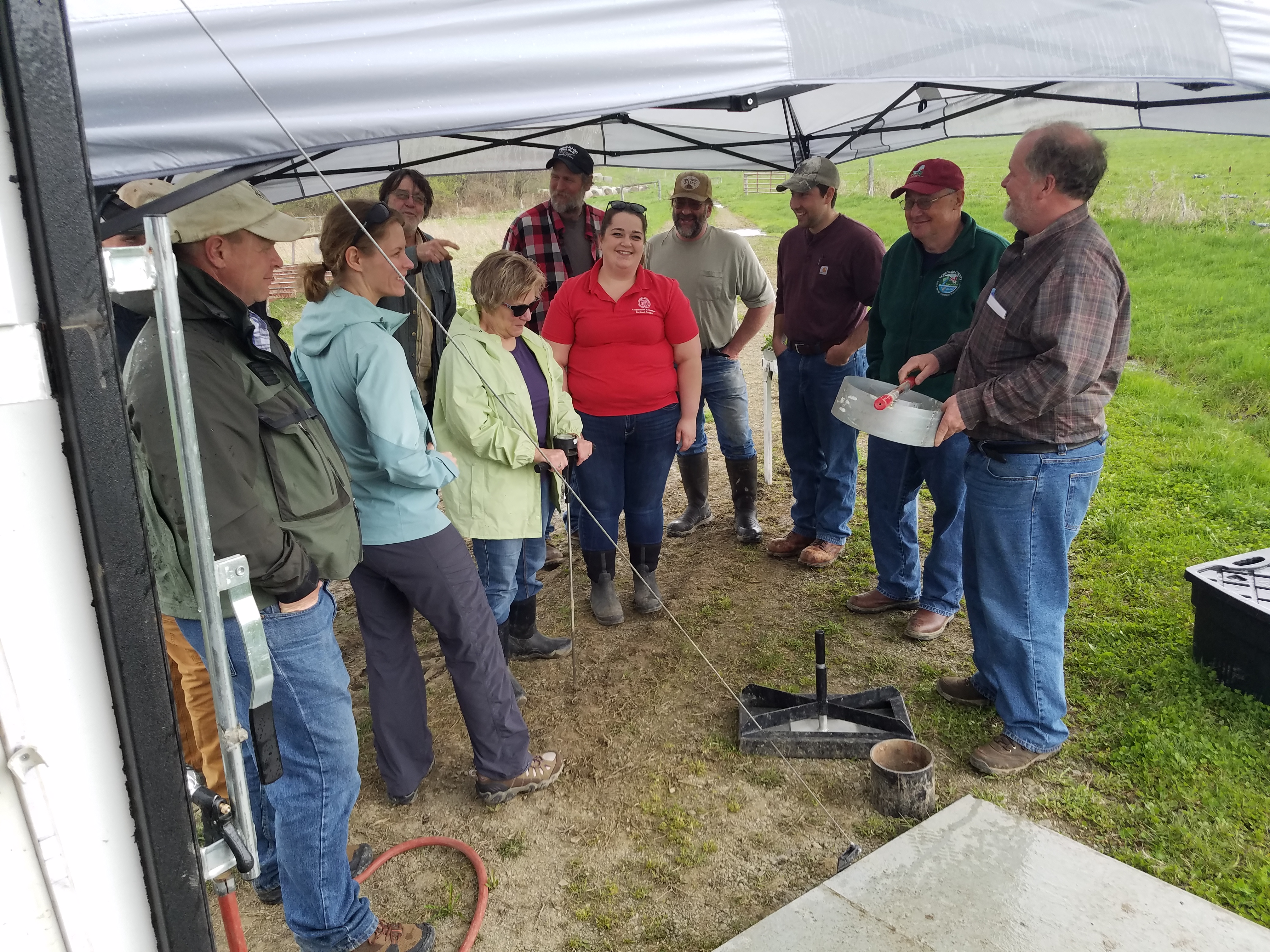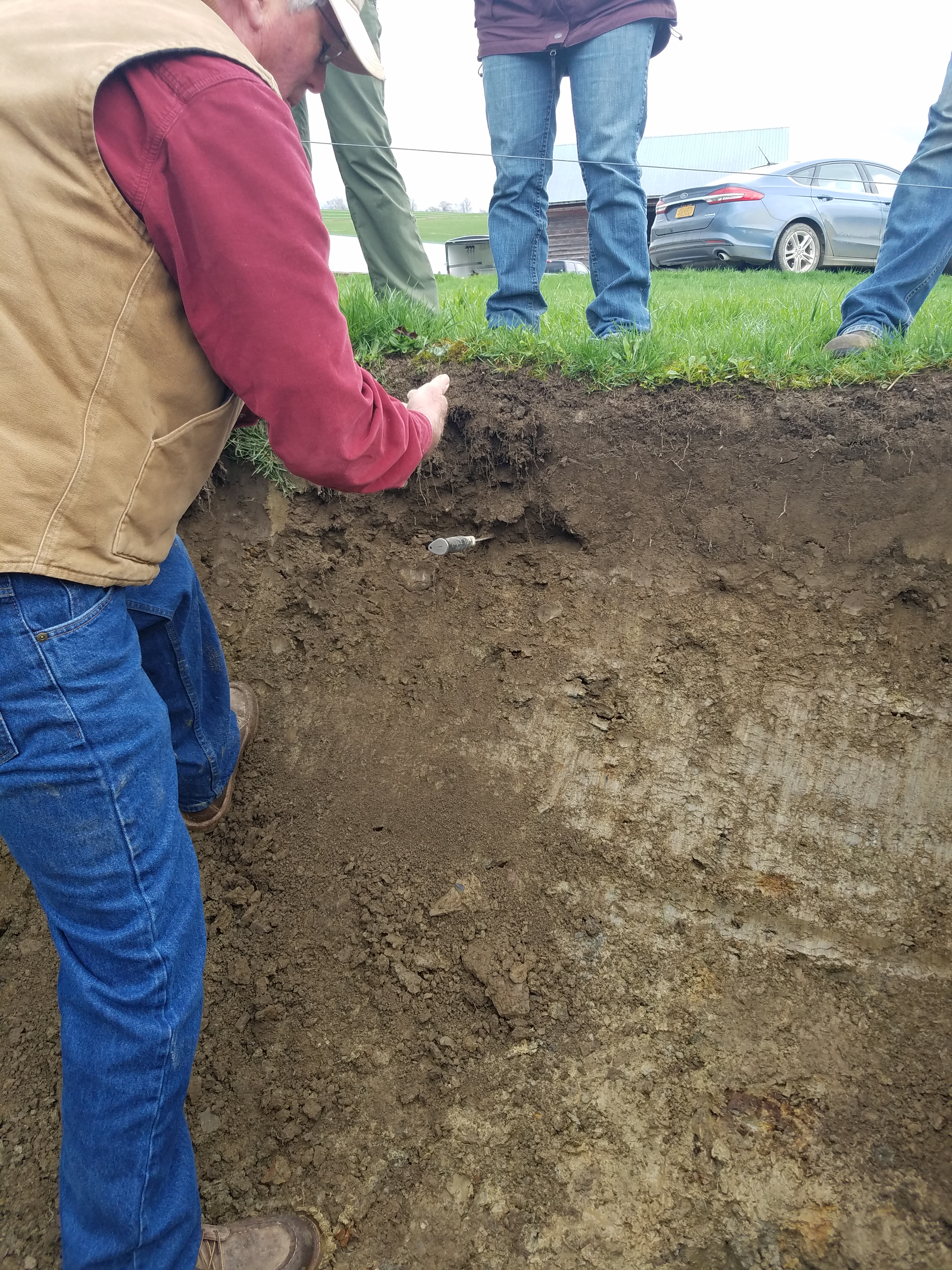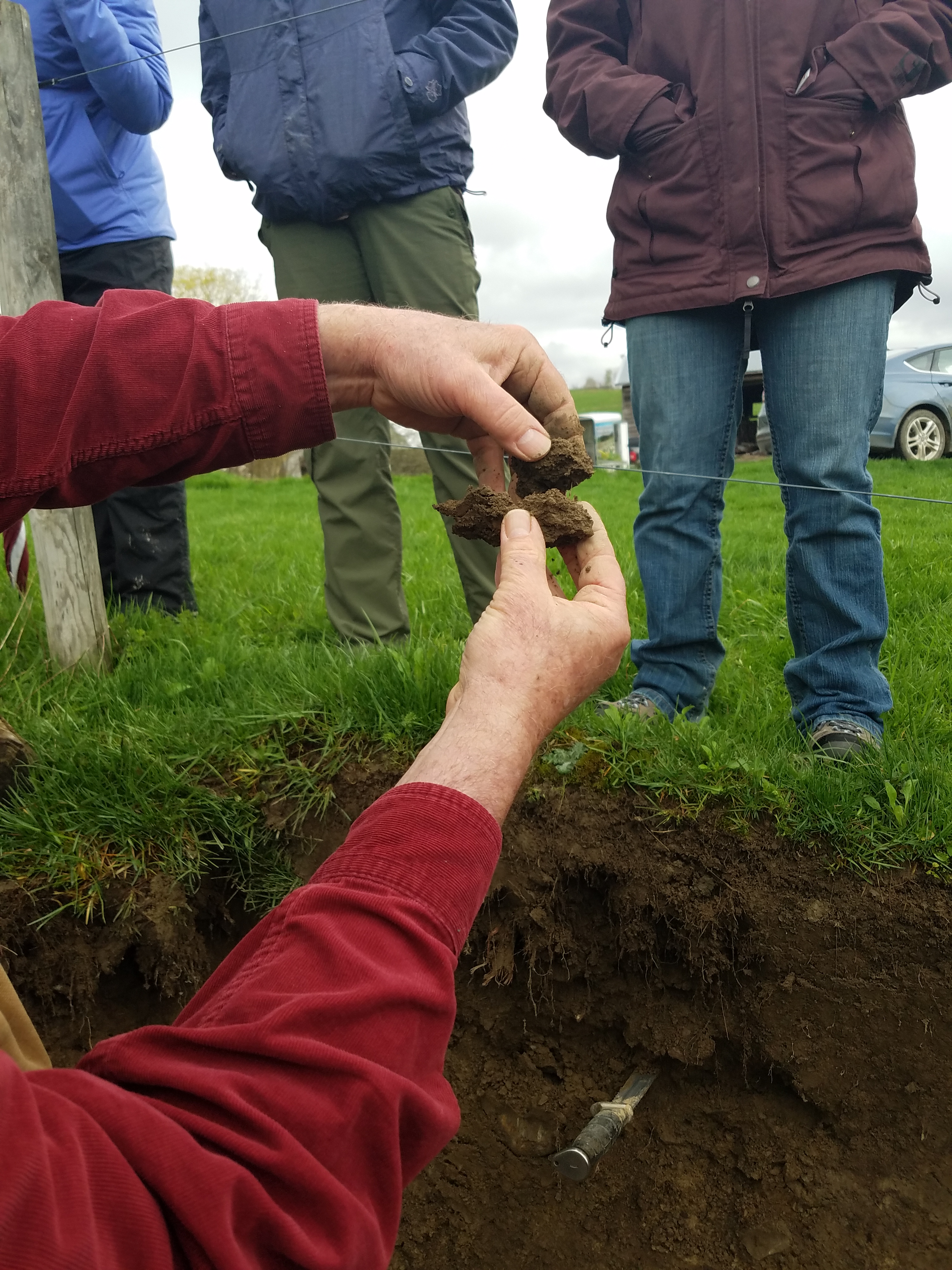Compaction and Soil Health in Northeast Pastures
5/17/19, 12:51 PM
By: Diane Frances
In addition to running our farm operation, Larry consults in the areas of soil science and agronomy. Today, most of his consulting is in Pennsylvania where he works with municipalities, engineering firms, farmers and developers on drip and spray wastewater systems, one of his specialty areas. You can learn more about Larry’s consulting on his webpage.
Recently Larry participated in a training program along with Fay Benson and Bob Schindelbeck for Northeast Grazing Educators here in central and western New York. It is a Northeast Sustainable Agriculture Research & Education (NE SARE) project funding training for farmers and Cornell Extension Personnel on the identification of soil compaction in northeast pasture soils. 
Compaction is an important issue in agriculture affecting soil health and productivity. Compacted soils, which result from heavy tractor and animal use over time, have less water and air flow and are therefore less productive. Identifying compaction is the first step, and Fay is working with farmers and ag educators to develop tools that he hopes will lead to improved pasture management and therefore more sustainable farms.
Fay’s idea for this NE SARE project is to use a soil penetrometer to measure soil penetration resistance in the fence line of a pasture where no livestock compaction occurred and within the grazing area where compaction is likely in order to develop tools to help farmers better identify compaction and be able to take necessary action. The morning sessions were presentations and discussions led by Fay, Bob, and Larry and in the afternoon they were in the field at two farms using the penetrometers to measure compaction and examining mini profiles to identify and describe soil structures.
Fay has a number of responsibilities as Small Dairy Support Cornell University SCNY Regional Team, Education Coordinator NY Dairy Grazing Apprenticeship, and Project Manager NY Organic Dairy Initiative. He also travels to many farm events with the Soil Health Trailer putting on demonstrations to show how healthy soils improve infiltration and prevent runoff.
Bob Schindelbeck is the Director, Cornell Soil Health Laboratory Department of Soil and Crop Sciences Cornell University. Bob presented the work going on at Cornell’s Soil Health Lab on the physical, chemical, and biological properties of soil, how they are measured in the lab and the interpretations on how to improve soil health.
 Larry’s role was to explain how to describe soil structure based on NRCS terminology. Structure is how the sand, silt, and clay fit together to form aggregates. Structure is described using terms for type (granular, subangular blocky, platy), grade (weak, moderate, strong, i.e. how visible the individual structural units are) and class (fine, medium, coarse, i.e. size of the granule, block, or plate). Typically surface soil layers (horizons) have granular structure which is very good for infiltration, water movement, and oxygen and carbon dioxide exchange. Granular structure usually produces maximum growth of plants. When compaction occurs either by livestock or equipment the granules are crushed and converted to plates. Platy structures impede water movement, stay wet longer, and have poor oxygen and carbon dioxide exchange. All in all a much poorer environment for plants resulting in less growth.
Larry’s role was to explain how to describe soil structure based on NRCS terminology. Structure is how the sand, silt, and clay fit together to form aggregates. Structure is described using terms for type (granular, subangular blocky, platy), grade (weak, moderate, strong, i.e. how visible the individual structural units are) and class (fine, medium, coarse, i.e. size of the granule, block, or plate). Typically surface soil layers (horizons) have granular structure which is very good for infiltration, water movement, and oxygen and carbon dioxide exchange. Granular structure usually produces maximum growth of plants. When compaction occurs either by livestock or equipment the granules are crushed and converted to plates. Platy structures impede water movement, stay wet longer, and have poor oxygen and carbon dioxide exchange. All in all a much poorer environment for plants resulting in less growth.
 Compaction in pastures and farm fields is difficult to avoid. The good news is that a healthy soil (physical, chemical, and biological properties in balance) allows a soil to be much more resilient when it comes to compaction. Through field work, correlating penetrometer reading and moisture levels, Fay is working to develop ways that farmers and ag educators can better identify soil compaction at any time of year and take appropriate action to address the compaction for improved soil health and farm performance.
Compaction in pastures and farm fields is difficult to avoid. The good news is that a healthy soil (physical, chemical, and biological properties in balance) allows a soil to be much more resilient when it comes to compaction. Through field work, correlating penetrometer reading and moisture levels, Fay is working to develop ways that farmers and ag educators can better identify soil compaction at any time of year and take appropriate action to address the compaction for improved soil health and farm performance.

 Larry’s role was to explain how to describe soil structure based on NRCS terminology. Structure is how the sand, silt, and clay fit together to form aggregates. Structure is described using terms for type (granular, subangular blocky, platy), grade (weak, moderate, strong, i.e. how visible the individual structural units are) and class (fine, medium, coarse, i.e. size of the granule, block, or plate). Typically surface soil layers (horizons) have granular structure which is very good for infiltration, water movement, and oxygen and carbon dioxide exchange. Granular structure usually produces maximum growth of plants. When compaction occurs either by livestock or equipment the granules are crushed and converted to plates. Platy structures impede water movement, stay wet longer, and have poor oxygen and carbon dioxide exchange. All in all a much poorer environment for plants resulting in less growth.
Larry’s role was to explain how to describe soil structure based on NRCS terminology. Structure is how the sand, silt, and clay fit together to form aggregates. Structure is described using terms for type (granular, subangular blocky, platy), grade (weak, moderate, strong, i.e. how visible the individual structural units are) and class (fine, medium, coarse, i.e. size of the granule, block, or plate). Typically surface soil layers (horizons) have granular structure which is very good for infiltration, water movement, and oxygen and carbon dioxide exchange. Granular structure usually produces maximum growth of plants. When compaction occurs either by livestock or equipment the granules are crushed and converted to plates. Platy structures impede water movement, stay wet longer, and have poor oxygen and carbon dioxide exchange. All in all a much poorer environment for plants resulting in less growth.  Compaction in pastures and farm fields is difficult to avoid. The good news is that a healthy soil (physical, chemical, and biological properties in balance) allows a soil to be much more resilient when it comes to compaction.
Compaction in pastures and farm fields is difficult to avoid. The good news is that a healthy soil (physical, chemical, and biological properties in balance) allows a soil to be much more resilient when it comes to compaction. 
